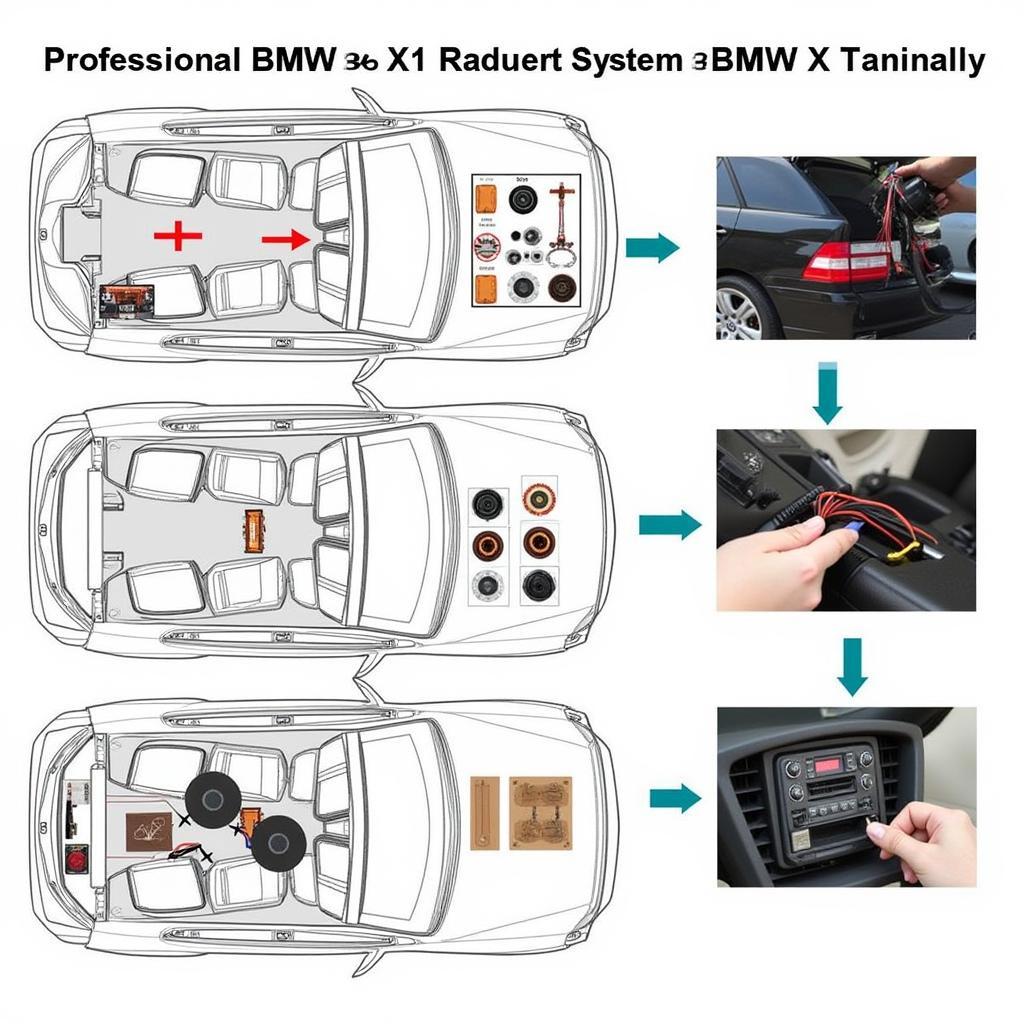The BMW i3 pedestrian sound module is a crucial safety feature designed to alert pedestrians and cyclists to the presence of the near-silent electric vehicle, especially at low speeds. This article delves into the intricacies of this module, covering its function, common issues, diagnostic procedures, and solutions.
Understanding the BMW i3 Pedestrian Sound Module
Electric vehicles like the BMW i3 operate much quieter than traditional combustion engine vehicles. This quiet operation, while beneficial in reducing noise pollution, poses a safety risk to pedestrians and cyclists who may not hear the approaching vehicle. The pedestrian sound module addresses this issue by emitting a synthesized sound to alert others to the car’s presence. This is particularly important at low speeds where the electric motor is virtually silent. The sound automatically deactivates at higher speeds when tire and wind noise become more prominent.
Common Problems with the BMW i3 Pedestrian Sound Module
Several issues can arise with the BMW i3 pedestrian sound module, ranging from complete failure to intermittent malfunctions. These can include:
- No Sound: The module may fail completely, resulting in no sound being emitted.
- Intermittent Sound: The sound may cut in and out or work only at certain times.
- Distorted Sound: The emitted sound may be distorted or garbled.
- Fault Codes: Diagnostic trouble codes (DTCs) related to the pedestrian sound module may be stored in the vehicle’s control unit.
Diagnosing BMW i3 Pedestrian Sound Module Issues
Diagnosing problems with the pedestrian sound module requires a systematic approach:
- Verify the Issue: Confirm that the sound is indeed not functioning correctly by testing the vehicle at low speeds in a safe environment.
- Check for DTCs: Use a diagnostic scanner to check for any stored fault codes related to the pedestrian sound module.
- Inspect the Module: Visually inspect the module for any signs of damage, loose connections, or corrosion.
- Test the Module: Specialized diagnostic tests can be performed to verify the module’s functionality.
Solutions for BMW i3 Pedestrian Sound Module Problems
Depending on the diagnosed issue, several solutions are available:
- Software Update: In some cases, a software update may resolve the problem. This can often be performed remotely.
- Module Replacement: If the module is faulty, it will need to be replaced.
- Wiring Repair: Damaged or corroded wiring can be repaired or replaced.
Why is the BMW i3 Pedestrian Sound Module Important?
The pedestrian sound module is essential for the safety of pedestrians and cyclists, especially in urban environments. It provides an audible warning of the vehicle’s presence, mitigating the risk of accidents.
How do I know if my BMW i3 Pedestrian Sound Module is faulty?
If you suspect a problem with your pedestrian sound module, listen for any irregularities in the sound or its absence altogether.
Can I replace the BMW i3 Pedestrian Sound Module myself?
While replacement is possible, it’s recommended to have a qualified technician perform the replacement to ensure proper installation and coding.
“The pedestrian sound module is a small component with a big impact on safety. Regular checks and prompt repairs are crucial for ensuring its optimal function.” – John Smith, Senior Automotive Electrical Engineer at CARDIAGTECH.
Conclusion
The BMW i3 pedestrian sound module plays a vital role in ensuring pedestrian safety. Understanding its function, potential issues, and solutions empowers BMW i3 owners to maintain the safety and reliability of their vehicles. Regular checks and prompt attention to any problems with the pedestrian sound module are essential for safe and responsible electric vehicle operation.
FAQ
- What is the purpose of the BMW i3 pedestrian sound module? To alert pedestrians and cyclists to the presence of the vehicle at low speeds.
- What are the common problems with the module? No sound, intermittent sound, distorted sound, and fault codes.
- How can I diagnose problems with the module? By verifying the issue, checking for DTCs, and inspecting the module.
- What are the solutions for module problems? Software updates, module replacement, and wiring repair.
- Why is the module important? It’s crucial for pedestrian and cyclist safety.
- How do I know if my module is faulty? Listen for irregularities in the sound or its complete absence.
- Can I replace the module myself? It’s recommended to have a qualified technician perform the replacement.
Related Topics:
- BMW i3 Diagnostic Services
- Remote Programming for BMW Vehicles
- Electric Vehicle Safety Features
For assistance, please contact us via Whatsapp: +1 (641) 206-8880, Email: CARDIAGTECH[email protected] or visit us at 276 Reock St, City of Orange, NJ 07050, United States. Our customer support team is available 24/7.


